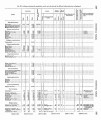| Title |
Annual Report of the Commissioner of Indian Affairs - 1866 |
| Subject |
Indians of North America; Indian reservations; Federal government; Annuities; Resources; White people--Relations with Indians; Indians of North America--Education; Black Hawk, approximately 1832-approximately 1890; Treaties; Education; Indigenous peoples--North America |
| Keywords |
Indian Agency; Reservations; Annual Report; Resources; Indian; White Relations; Black Hawk; Washakie; Kanosh; Tabby; Sanpitch; Native Americans |
| Publisher |
Digitized by J. Willard Marriott Library, University of Utah |
| Tribe |
Ute; Paiute; Goshute; Navajo; Shoshone |
| Language |
eng |
| Description |
Excerpts concerning Utah from the Annual Report of the Commissioner of Indian Affairs - Courtesy of the University of Wisconsin Digital Collections. The Commissioner of Indian Affairs mentions a pending treaty allowing Utah Indians to be paid their annuities in the form of goods and beneficial objects. The Commissioner also claims that agriculture is expanding on the Uintah Reservation, and that Washakie and Kanosh are exercising a positive influence over the tribes, while Black Hawk is exercising a negative one. Reports from the Utah Superintendency include discussions regarding relations with Washakie, the potential of mining reservation lands, the distribution of annuity payments to each separate tribe, the lack of reservation schools, and attacks conducted by Black Hawk |
| Type |
Text |
| Coverage |
Uintah and Ouray Indian Reservation (Utah); Utah; Washington (D.C.) |
| Format |
application/pdf |
| Rights |
Digital Image © 2011 America West Center. All Rights Reserved |
| ARK |
ark:/87278/s6vt4ns7 |
| Creator |
Cooley, D.N.; Browning, Orville Hickman, 1806-1881 |
| Date |
1866 |
| Spatial Coverage |
Uintah and Ouray Indian Reservation (Utah); Utah; Washington (D.C.) |
| Setname |
uaida_main |
| ID |
368667 |
| Reference URL |
https://collections.lib.utah.edu/ark:/87278/s6vt4ns7 |























































































